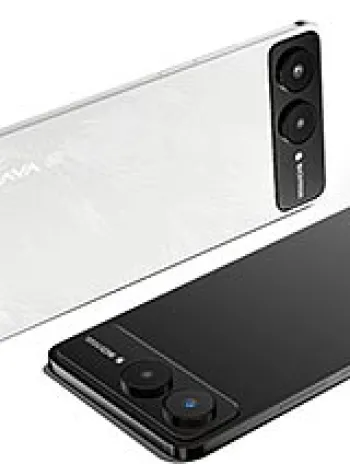
Overview of Lava Iris 504q+
The Lava Iris 504q+ is a versatile smartphone that marked its presence in the market in April 2014. While it may not boast the high-end specifications that newer models do, it still offers a decent set of features for users looking for an economical smartphone solution. Its strengths include a reasonably good camera, dual SIM support, and a sleek design that fits comfortably in the hand.
Design and Build
The design of the Lava Iris 504q+ is one of its most attractive features. It measures 146.7 x 72.5 x 7.9 mm, making it slim and sleek, fitting comfortably in the user’s hand while contributing to its aesthetic appeal. The weight of 149 g ensures that it is lightweight and easy to carry around. The phone features a dual SIM capacity, allowing users to maintain personal and professional connections effortlessly.
Display
The device comes equipped with a 5.0-inch IPS LCD screen, offering a resolution of 720 x 1280 pixels. This results in a pixel density of approximately 294 ppi, rendering decent clarity and color accuracy for its class. The screen-to-body ratio of around 64.8% is typical for smartphones of its time, providing a sufficiently large display area for browsing and media consumption.
Performance
Under the hood, Lava Iris 504q+ operates on a quad-core 1.3 GHz processor, paired with the Mali-400MP2 GPU. This combination provides adequate performance for daily tasks such as browsing, media playback, and basic gaming. It comes with 1GB RAM, which was a standard for mid-range phones during its release. However, this might not suffice for more demanding applications available today.
Software
The device originally runs on Android 4.2.2 Jelly Bean and can be upgraded to Android 4.4.2 KitKat. While the software is quite dated by modern standards, it supports basic smartphone operations and applications that were prevalent at the time of its release.
Camera
The Lava Iris 504q+ comes with a single 10 MP main camera equipped with autofocus, LED flash, panorama, and HDR features. This setup allows for decent photo quality in well-lit conditions. It also supports video recording capabilities. For selfies, the phone includes a 2 MP front camera, which can capture basic snapshots and handle video calls.
Storage
Internally, the phone provides 8GB of storage, which was fairly common for smartphones at that time. Additionally, it supports storage expansion via a microSDHC card, allowing users to add more space for apps, photos, and media files.
Battery Life
Powering the Lava Iris 504q+ is a removable 2000 mAh Li-Po battery, offering a standby time of up to 230 hours and a talk time of around 4 hours and 30 minutes. While this battery capacity may struggle with heavy usage, it is adequate for moderate daily activities.
Connectivity and Communications
In terms of connectivity, the Lava Iris 504q+ supports GSM and HSPA technologies. It includes 2G and 3G bands, providing decent connectivity options for calls and internet usage, albeit lacking support for 4G LTE. The device is equipped with Wi-Fi 802.11 b/g/n, Bluetooth 3.0 with A2DP, GPS, FM radio, and a microUSB 2.0 port for tethering and file transfer.
Additional Features
The phone includes basic sensors such as an accelerometer and proximity sensor, enhancing its functionality with auto-rotate and auto screen-off features. However, it doesn't include more advanced sensors like a gyroscope or fingerprint scanner that modern users might expect.
Market Position
Though the Lava Iris 504q+ has been discontinued, it initially targeted users looking for a budget-friendly smartphone with dual SIM capabilities. Its modest specifications and affordability made it a suitable choice for users in developing markets or those transitioning from basic phones to their first smartphone.
Conclusion
The Lava Iris 504q+ may not compete with contemporary smartphones in terms of specifications or performance, but it offers a glimpse into the mid-range capabilities of its time. For users seeking basic smartphone functionalities or a secondary device, it manages to cover the essentials quite effectively.
Key Features of Lava Iris 504q+
- GSM / HSPA Technology for network connectivity
- Sleek design with dimensions: 146.7 x 72.5 x 7.9 mm and weight: 149 g
- Dual SIM support for versatility
- 5.0-inch IPS LCD display with 720 x 1280 pixels resolution
- Upgradable OS from Android 4.2.2 (Jelly Bean) to 4.4.2 (KitKat)
- Quad-core 1.3 GHz CPU with Mali-400MP2 GPU for efficient performance
- 8GB internal storage expandable via microSDHC card slot
- 10 MP main camera with autofocus, LED flash, panorama, and HDR
- 2 MP front camera for selfies
- Wi-Fi 802.11 b/g/n and Bluetooth 3.0 for connectivity
- FM radio and GPS support
- Removable Li-Po 2000 mAh battery
Disadvantages of Lava Iris 504q+
- Outdated Operating System: The device runs on Android 4.2.2 (Jelly Bean), which is upgradable only to Android 4.4.2 (KitKat), both of which are outdated by several years.
- Limited Internal Storage: Comes with only 8GB of internal storage, which may not be sufficient for modern app and media requirements.
- Low RAM: Equipped with 1GB RAM, which can lead to slower performance and limited multitasking capabilities.
- No NFC Support: Lacks NFC technology, which restricts the use of advanced connectivity features like contactless payments.
- Low Battery Capacity: The 2000 mAh battery may not provide sufficient power for long usage periods, offering only up to 4 hours and 30 minutes of talk time.
- Basic Front Camera: The 2 MP front camera may not deliver satisfactory quality for selfies or video calls.

View Also
More Phones
All Rights Reserved +14266 Phones © Mobilawy 2025

























